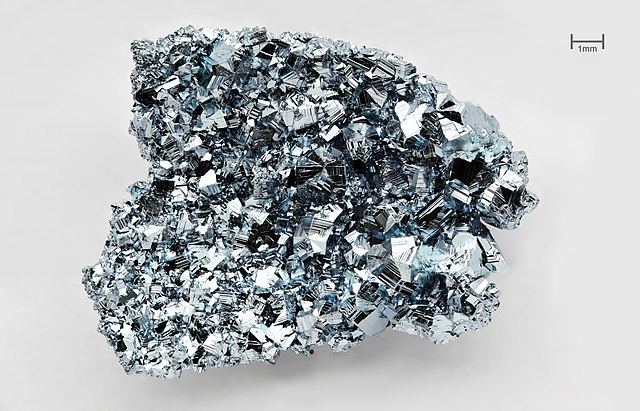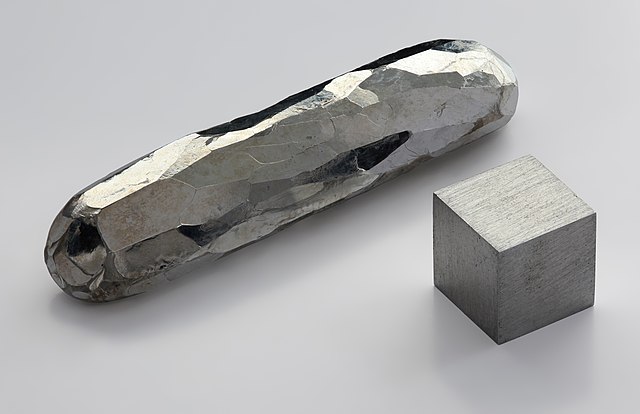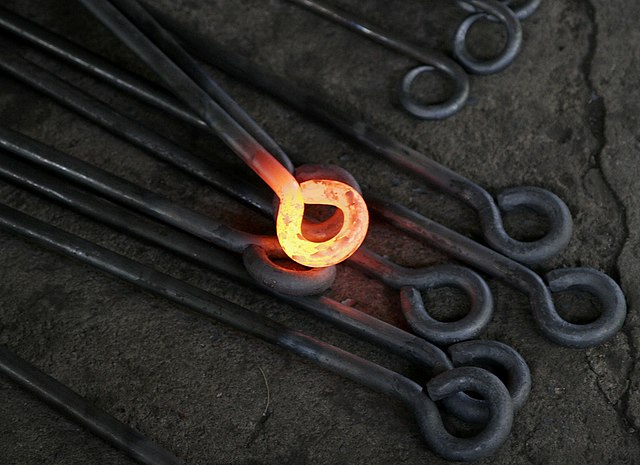Heavy metals are generally defined as metals with relatively high densities, atomic weights, or atomic numbers. The criteria used, and whether metalloids are included, vary depending on the author and context. In metallurgy, for example, a heavy metal may be defined on the basis of density, whereas in physics the distinguishing criterion might be atomic number, while a chemist would likely be more concerned with chemical behaviour. More specific definitions have been published, none of which have been widely accepted. The definitions surveyed in this article encompass up to 96 out of the 118 known chemical elements; only mercury, lead and bismuth meet all of them. Despite this lack of agreement, the term is widely used in science. A density of more than 5 g/cm3 is sometimes quoted as a commonly used criterion and is used in the body of this article.
Crystals of osmium, a heavy metal nearly twice as dense as lead
Chromium crystals and 1 cm3 cube
Arsenic, sealed in a container to stop tarnishing
Cadmium bar and 1 cm3 cube
A metal is a material that, when freshly prepared, polished, or fractured, shows a lustrous appearance, and conducts electricity and heat relatively well. Metals are typically ductile and malleable. These properties are the result of the metallic bond between the atoms or molecules of the metal.
Iron, shown here as fragments and a 1 cm3 cube, is an example of a chemical element that is a metal.
A metal in the form of a gravy boat made from stainless steel, an alloy largely composed of iron, carbon, and chromium
Gallium crystals
A metal rod with a hot-worked eyelet. Hot-working exploits the capacity of metal to be plastically deformed.








